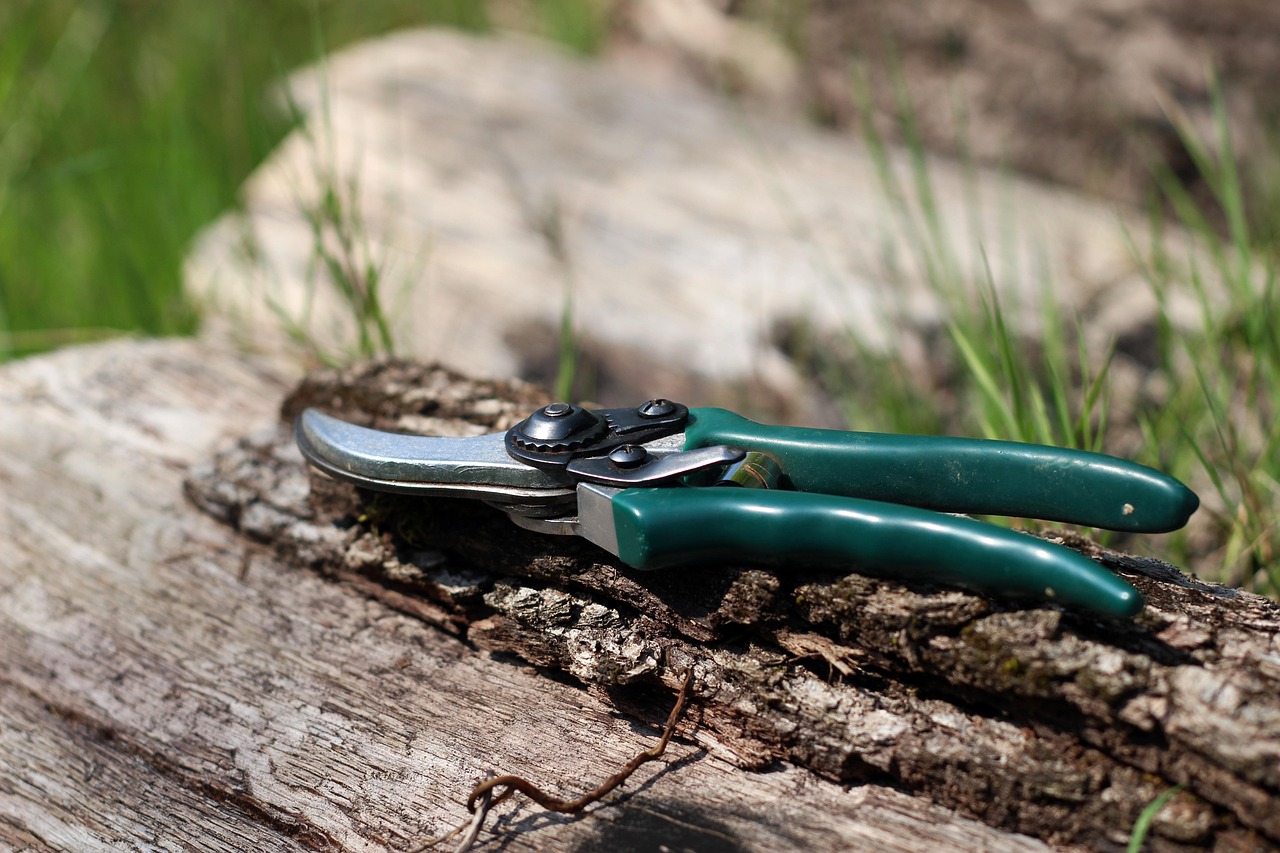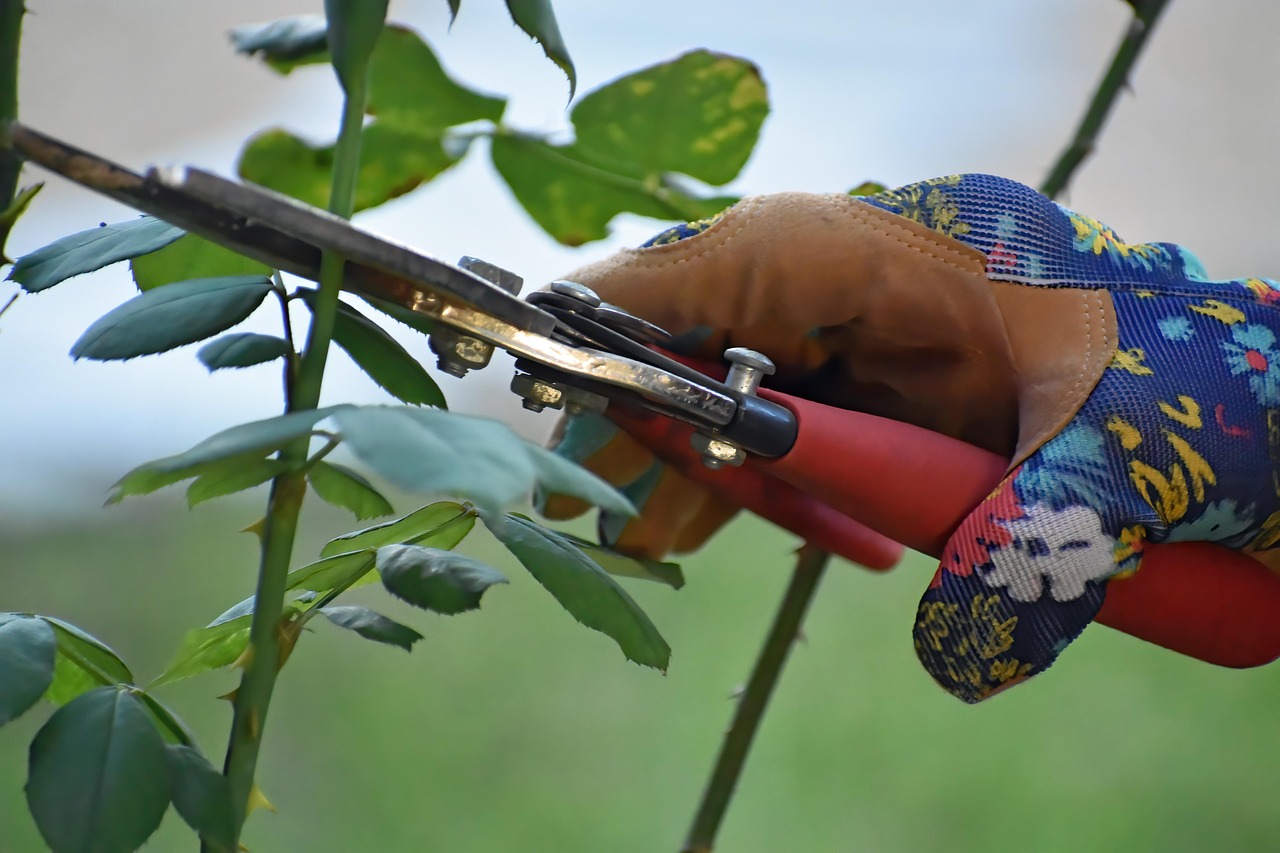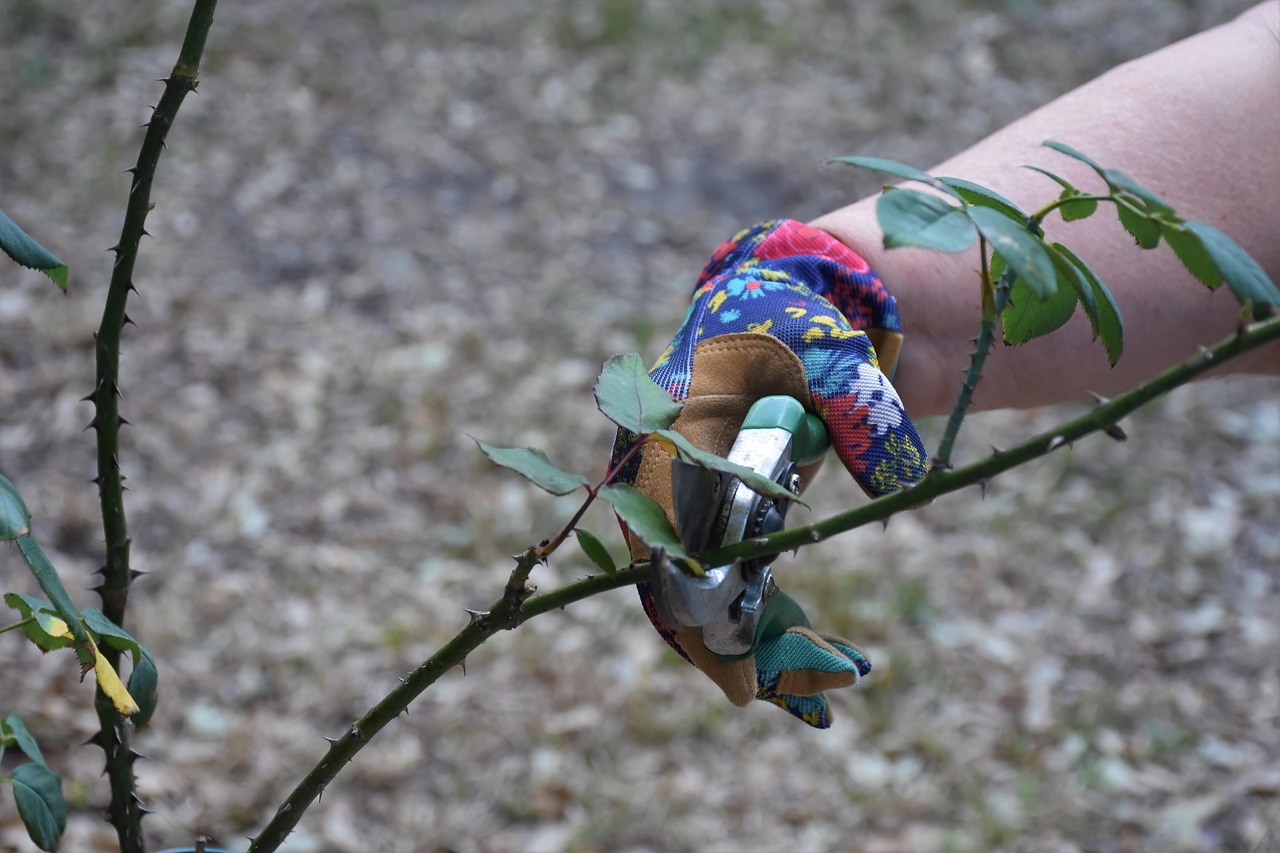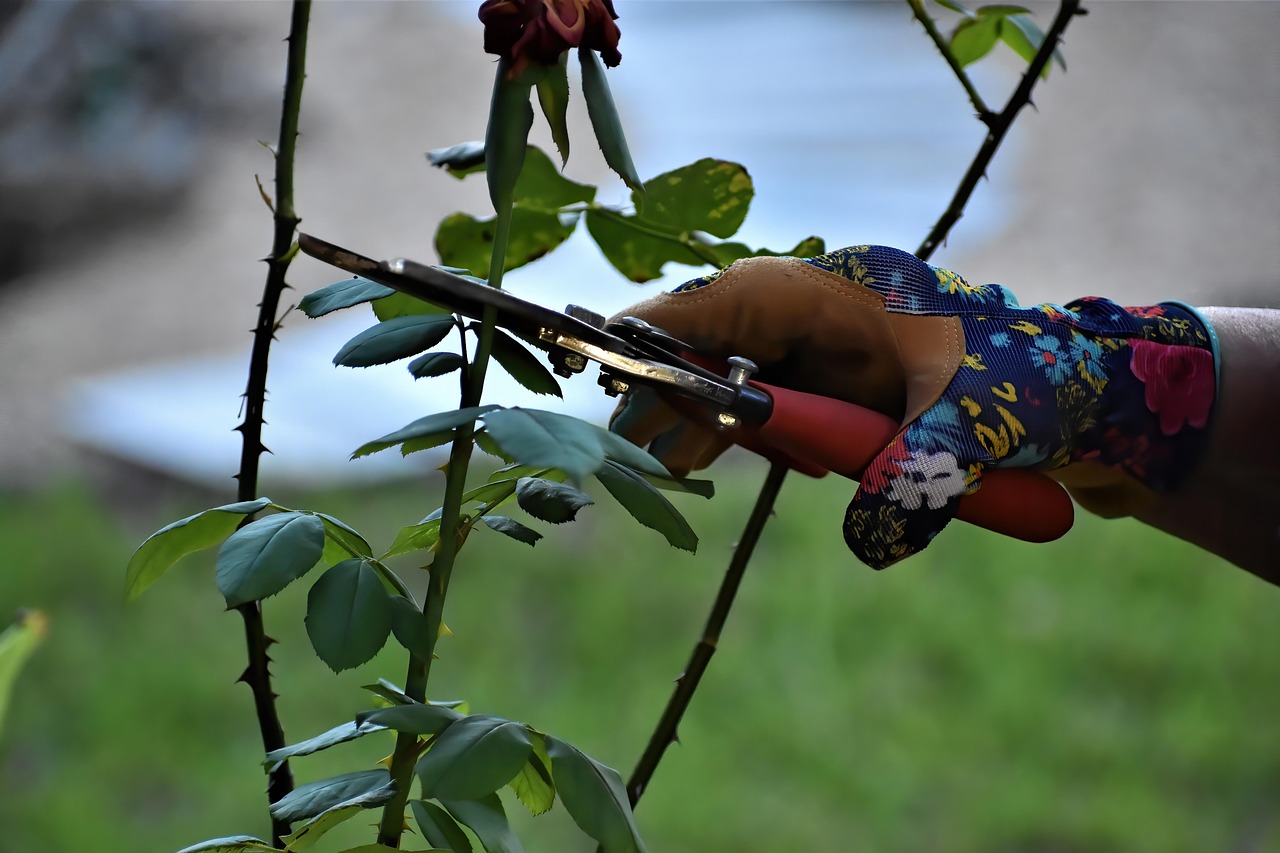Pruning roses effectively promotes healthier petals and reduces pest populations by allowing better air circulation, improving sunlight exposure, and removing diseased or dead wood. This process encourages new growth and strengthens the plant’s overall health.
Roses are beloved for their beauty and fragrance. However, they can also be susceptible to various pests and diseases. Pruning is a crucial practice in rose care that not only enhances the plant’s aesthetics but also improves its health. By removing dead or diseased branches, gardeners can reduce the risk of pest infestations and diseases while promoting vigorous new growth.

Understanding the right techniques for pruning roses is essential for achieving optimal results. There are different types of roses, each requiring specific pruning methods. Knowing when and how to prune can dramatically influence the blooming cycle and health of these plants.
Benefits of Pruning Roses
Pruning roses offers several benefits that contribute to their overall well-being. Here are some key advantages:
- Improved Air Circulation: Pruning opens up the center of the plant, allowing air to flow freely. This reduces humidity levels around the foliage, which can decrease the likelihood of fungal diseases.
- Better Sunlight Exposure: By removing crowded branches, sunlight can reach more parts of the plant. This encourages even growth and helps flowers develop fully.
- Enhanced Flower Production: Regular pruning stimulates new growth and leads to more blooms. Healthy plants produce more flowers, making your garden vibrant.
- Pest Management: Pruning eliminates dead and diseased wood where pests can thrive. Healthy roses are less attractive to pests, reducing the need for chemical treatments.
- Shape and Size Control: Pruning allows gardeners to shape their roses according to desired aesthetics or garden layouts. This keeps plants manageable and visually appealing.
To maximize these benefits, it is necessary to understand the best practices for pruning roses. Timing and technique are critical factors that contribute to effective pruning.

When to Prune Roses
The timing of pruning can be just as important as the technique used. Generally, roses should be pruned in early spring before they begin to bloom. This timing allows for optimal recovery and growth as the weather warms up.
However, specific timing can vary depending on the type of rose:
| Type of Rose | Best Time to Prune |
|---|---|
| Hybrid Tea Roses | Late winter to early spring (after last frost) |
| Floribunda Roses | Early spring (before new growth starts) |
| Climbing Roses | After flowering or early spring for new growth |
| Knock Out Roses | Early spring (before new growth) |
It is also important to monitor local weather conditions. Wait until you are sure that temperatures will remain consistently above freezing before starting to prune. This helps ensure that your roses will not suffer from unexpected frost damage after being trimmed.

Essential Tools for Pruning
Using the right tools is vital for effective pruning. Here are some essential tools every rose gardener should have:
- Bypass Pruners: Ideal for making clean cuts on stems without crushing them.
- Loppers: Useful for cutting thicker branches that pruners cannot handle.
- Saw: Necessary for larger rose bushes that may have very thick branches.
- Gloves: Protect your hands from thorns and potential irritants.
- Pest Deterrent Spray: Useful for treating any potential pest issues after pruning.
Maintaining sharp blades is crucial for all cutting tools. Dull blades can damage plants and create openings for diseases. Consider sharpening your tools before each pruning session to ensure clean cuts.
Pruning Techniques
Several techniques can be utilized when pruning roses. Understanding how to implement these methods effectively will lead to healthier plants:

- Crown Thinning: This involves removing the oldest wood at the base of the plant. It encourages new growth and improves air circulation.
- Crown Reduction: Involves cutting back tall canes to a desired height. This helps control size and encourages lateral growth.
- Shooting Back: Cutting back healthy stems to promote bushier growth. This technique is especially useful for certain types of roses.
Each technique serves a specific purpose and may be more suitable depending on the rose variety and its growth habits. Learning about these techniques will empower you to make informed decisions when caring for your roses.
With the right knowledge, tools, and techniques, you can successfully prune your roses. This practice will lead to vibrant blooms and healthier plants while minimizing pest issues in your garden.
Common Mistakes to Avoid When Pruning Roses
Pruning roses can be a rewarding experience, but it is essential to avoid common mistakes that can hinder the health of your plants. Understanding these pitfalls will help you achieve better results and keep your roses thriving.
- Pruning at the Wrong Time: Timing is crucial. Pruning too early can expose plants to frost damage. Conversely, pruning too late may lead to reduced blooms.
- Over-Pruning: Excessive pruning can weaken the plant. Always leave enough healthy stems to support growth and flowering.
- Neglecting to Clean Tools: Using dirty tools can introduce diseases. Always disinfect your pruning tools before and after use.
- Ignoring Plant Health: Failing to assess the overall health of the plant before pruning can lead to cutting away vital parts of a struggling rose.
- Not Following Specific Guidelines for Rose Types: Each type of rose has unique requirements. Not adhering to these guidelines can compromise plant health.
Post-Pruning Care for Roses
After pruning, providing proper care is vital for recovery and growth. Here are some essential steps to follow:
- Watering: Ensure your roses receive adequate water after pruning. This helps reduce stress and encourages new growth.
- Fertilizing: Apply a balanced fertilizer to promote healthy growth. Look for fertilizers specifically formulated for roses.
- Mulching: Apply a layer of mulch around the base of the plants. This helps retain moisture, suppress weeds, and maintain soil temperature.
- Pest Monitoring: Keep an eye out for pests that may try to invade after pruning. Early detection allows for easier management.
By following these post-pruning care tips, you will set your roses up for a successful growing season. Healthy plants respond better to pruning and produce more blooms.
Identifying and Treating Common Rose Diseases
Roses are susceptible to several diseases. Understanding how to identify and treat these conditions will help maintain their health. Here are some common rose diseases to watch for:
| Disease | Symptoms | Treatment |
|---|---|---|
| Black Spot | Dark spots with fringed edges on leaves; yellowing leaves that drop prematurely. | Remove affected leaves; apply fungicide as needed; ensure good air circulation. |
| Powdery Mildew | White, powdery coating on leaves; stunted growth. | Avoid overhead watering; use fungicides or natural remedies like baking soda solutions. |
| Rust | Rust-colored spots on the underside of leaves; leaves may yellow and drop. | Remove infected leaves; apply fungicides; provide good air circulation. |
| Crown Gall | Abnormal swellings or galls on the roots or lower stems. | Remove affected plants; sanitize tools; prevent wounding of plants. |
Prompt action against diseases can prevent them from spreading. Regular monitoring and early intervention are key components in maintaining healthy roses.
Pest Control Strategies for Roses
Pests can pose a significant threat to rose health. Understanding common pests and implementing effective control strategies is essential for keeping your roses vibrant. Here are some common rose pests:
- Aphids: Small, soft-bodied insects that suck sap from plants, causing wilting and stunted growth. Use insecticidal soap or neem oil to control aphid populations.
- Spider Mites: Tiny arachnids that create webbing on leaves and cause yellowing. Increase humidity around plants and use miticides if necessary.
- Japanese Beetles: Metallic green beetles that eat foliage and flowers. Hand-picking or using traps can help manage their numbers.
- Thrips: Small, slender insects that damage flower petals. Use sticky traps or insecticidal soap to control infestations.
In addition to direct pest control methods, encouraging beneficial insects like ladybugs can help reduce pest populations naturally. Maintaining healthy plant conditions also makes roses less susceptible to pest attacks.
The Role of Soil Health in Rose Care
The soil quality significantly impacts the health of your rose bushes. Healthy soil supports strong root systems and promotes vigorous growth. Here are some key considerations:
- Soil Type: Roses thrive in well-draining soil rich in organic matter. Sandy loam is often ideal for roses.
- pH Level: Roses prefer slightly acidic soil with a pH between 6.0 and 6.8. Testing soil pH can provide valuable insights into necessary amendments.
- Nutrients: Regularly enrich the soil with compost or well-rotted manure to provide essential nutrients for growth and flowering.
A soil test can help determine nutrient levels and pH, guiding appropriate amendments. Building healthy soil will greatly enhance the overall resilience of your roses against pests and diseases.
Seasonal Care for Roses
Maintaining roses requires a seasonal approach to care. Different times of the year call for specific actions to ensure that the plants remain healthy and productive. Understanding these seasonal needs can significantly enhance your rose gardening experience.
Spring Care
Spring is a critical time for roses as they awaken from dormancy. Here are essential tasks to focus on during this season:
- Pruning: As discussed earlier, early spring is the ideal time to prune your roses. This encourages new growth and prepares the plant for the blooming season.
- Fertilizing: Apply a balanced fertilizer to provide essential nutrients as growth begins. Look for fertilizers designed specifically for roses.
- Watering: Ensure your roses receive consistent moisture as temperatures start to rise. Deep watering encourages strong root development.
Summer Care
During the summer months, roses require ongoing attention to thrive in the heat:
- Mulching: Apply a layer of mulch around the base of your roses. This helps retain soil moisture and suppresses weeds, which compete for nutrients.
- Regular Watering: Check soil moisture frequently. Roses typically need about an inch of water per week, especially during dry spells.
- Pest Monitoring: Keep a close eye on pest populations and diseases. Early detection allows for timely intervention with appropriate treatments.
- Deadheading: Remove spent blooms to encourage further flowering. This practice keeps the plants looking tidy and promotes additional blooms.
Fall Care
As summer fades, preparing your roses for winter becomes essential:
- Final Pruning: Light pruning in the fall can help remove any dead or diseased wood, but avoid heavy pruning until spring.
- Fertilizing: Use a slow-release fertilizer to help roses store energy for winter dormancy without promoting new growth.
- Watering: Ensure adequate watering before the ground freezes to help sustain the plants through winter.
- Mulching: Add extra mulch around the base of the plants. This provides insulation against freezing temperatures and helps retain moisture.
Winter Care
Winter presents unique challenges for rose care, especially in colder climates. Here are some strategies to protect your roses:
- Protection from Harsh Weather: Consider wrapping the base of rose bushes with burlap or using rose cones for insulation against severe cold.
- Avoid Overwatering: While roses need some moisture, overwatering in winter can lead to root rot. Ensure proper drainage.
- Monitoring for Rodents: Keep an eye out for small animals that may burrow into the protective layers around your plants. Take preventive measures as needed.
The Importance of Companion Planting
Companion planting can enhance rose health by deterring pests and promoting beneficial relationships between plants. Here are some effective companion plants for roses:
- Marigolds: Their strong scent deters aphids and other harmful pests while attracting beneficial insects.
- Nasturtiums: These can act as a trap crop, drawing aphids away from your roses.
- Basil: Not only is it a culinary herb, but it also can help repel certain insects while enhancing the flavor of nearby vegetables.
- Lavender: This fragrant herb attracts pollinators and repels aphids and other pests.
Selecting the right companions can create a thriving ecosystem in your garden, leading to healthier roses and improved pest management.
Understanding Rose Varieties
A key aspect of successful rose care is understanding the different types of roses available. Each variety has unique characteristics and care requirements. Here are some popular types of roses:
| Type of Rose | Description | Cultural Needs |
|---|---|---|
| Hybrid Tea Roses | Known for their large blooms and long stems, ideal for cutting gardens. | Require full sun and well-draining soil; need regular deadheading. |
| Floribunda Roses | Bloom in clusters, providing continuous color throughout the growing season. | Tolerant of various conditions; need good air circulation and regular pruning. |
| Climbing Roses | Characterized by long canes that can be trained to grow on trellises or fences. | Require sturdy support; regular pruning enhances blooming. |
| Shrub Roses | Diverse group with bushy growth habits; often disease-resistant and low maintenance. | Tolerate various soil types; require minimal pruning compared to other types. |
Selecting the right variety based on your garden’s conditions and your aesthetic preferences is crucial for success. Each type will respond differently to care practices and environmental factors.
Caring for Newly Planted Roses
Newly planted roses require special attention as they establish themselves in their new environment. Here are some care tips:
- Watering: Newly planted roses need consistent moisture without becoming waterlogged. Ensure the soil remains evenly moist during the first few weeks after planting.
- Mulching: Apply mulch around newly planted roses to retain moisture and suppress weeds.
- Avoid Fertilizing Immediately: Wait at least six weeks before applying fertilizer to allow roots to establish without being overwhelmed by nutrients.
- Pest Monitoring: Keep an eye out for pests that may target young plants. Early intervention is crucial.
Caring properly for newly planted roses sets the foundation for healthy growth and abundant blooms in the future. With attention and patience, these young plants will flourish in your garden.
Long-Term Maintenance of Roses
Once your roses are established, maintaining their health and beauty becomes an ongoing effort. Regular care and attention will ensure that they continue to thrive year after year. Here are some long-term maintenance tips to consider:
- Regular Pruning: Continue to prune annually to remove dead or diseased wood and to shape the bush. This practice ensures healthy growth and abundant blooms.
- Soil Management: Regularly amend the soil with organic matter to maintain its fertility. This practice helps support robust root systems and promote healthy growth.
- Watering Practices: Water deeply but infrequently to encourage deep root growth. Early morning watering is best to reduce evaporation and prevent fungal diseases.
- Routine Pest and Disease Checks: Regularly inspect your roses for signs of pests or diseases. Early detection allows for more effective control methods.
- Seasonal Fertilization: Provide nourishment during the growing season with appropriate fertilizers. Follow the instructions for application rates and frequency.
By adhering to these long-term care practices, you can enjoy beautiful roses that bloom abundantly and remain healthy throughout their lifecycle. Consistent maintenance fosters a thriving garden environment.
Environmental Considerations for Rose Care
The environment plays a significant role in rose cultivation. Factors such as climate, soil conditions, and local pest populations can influence how you care for your roses. Here are some environmental considerations:
- Climate Adaptation: Choose rose varieties that are well-suited to your local climate. For example, some roses are more tolerant of heat, while others may thrive in cooler climates.
- Soil Drainage: Ensure proper drainage in your garden beds. Poor drainage can lead to root rot and other issues, particularly in heavy clay soils.
- Microclimates: Take advantage of microclimates in your garden. Areas near walls or under trees may provide different temperature and moisture levels that can benefit specific rose varieties.
- Pest Management Strategies: Understand local pest dynamics. Implement integrated pest management (IPM) strategies that consider beneficial insects, cultural practices, and organic treatments.
By tailoring your care routine to the specific environmental conditions of your garden, you can optimize the health and vitality of your roses.
Choosing the Right Tools for Rose Care
Having the proper tools makes rose maintenance easier and more efficient. Investing in quality tools will enhance your gardening experience. Here are some essential tools for rose care:
- Pruning Shears: A sharp pair of bypass pruners is essential for making clean cuts without damaging stems.
- Loppers: For thicker branches, loppers provide the leverage needed to make clean cuts with less effort.
- Trowel: A sturdy trowel is useful for planting, digging, and amending soil around roses.
- Garden Fork: A garden fork helps aerate the soil and mix in amendments effectively.
- Watering Can or Hose with a Spray Nozzle: Efficient watering tools help deliver water gently without damaging delicate rose petals.
Maintaining your tools is also crucial. Clean and sharpen them regularly to ensure they perform well and prevent the spread of diseases between plants.
Final Thoughts
Caring for roses requires a combination of knowledge, patience, and dedication. Understanding the nuances of pruning, seasonal care, pest management, and environmental factors will empower you to cultivate beautiful and healthy roses. Remember that each rose variety may have unique needs, so adapting your care techniques accordingly is essential.
By investing time in proper pruning and ongoing maintenance, you can create a flourishing rose garden that brings joy and beauty to your landscape. The rewards of nurturing these stunning flowers extend beyond their visual appeal; they also contribute positively to your overall gardening experience. With commitment and care, your roses can thrive for years to come, providing breathtaking blooms and fragrant aromas that enhance any outdoor space.
Ultimately, a well-maintained rose garden not only showcases your hard work but also offers a sanctuary for beneficial insects and pollinators. Embrace the journey of rose gardening, knowing that each stage of growth contributes to a vibrant ecosystem within your garden.
